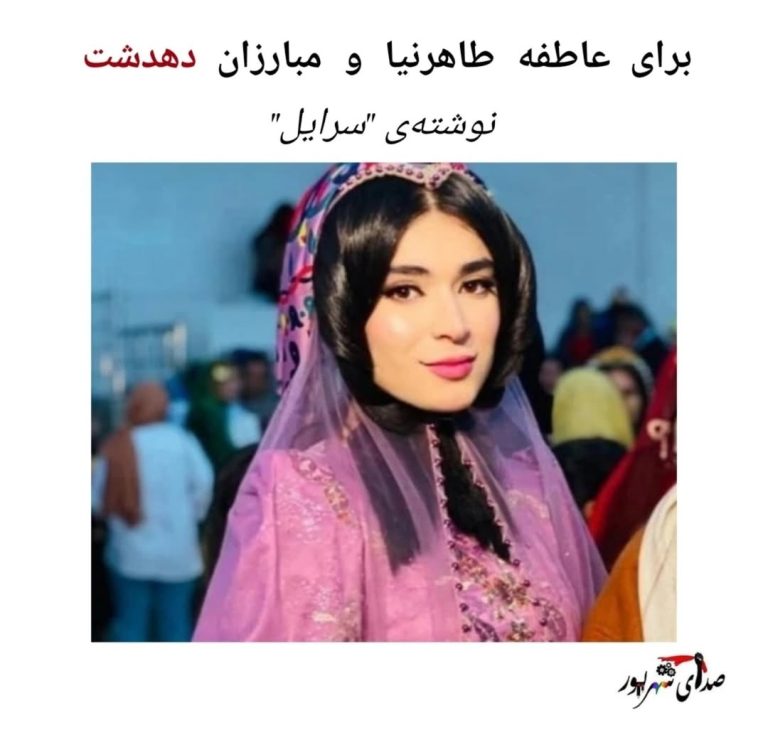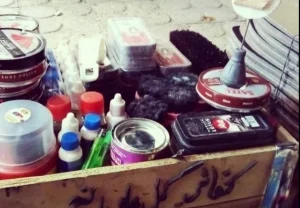By: Sarayel*
If not for you, no one would even know the name of Dehdasht. Few remember where it lies, perhaps, if they search online, scattered images of Belad Shapur, the oak forests, Khayiz, and the Marun River might appear before them. On February 13, 2025, an officer stands in the streets of Dehdasht, shouting: ‘Go home or I’ll cut your tresses (gis in Farsi) off, I swear!’ This officer is invoking a history. Among the Lor, a woman’s tresses are sacred and deeply respected. When feuds flared and blood was on the verge of spilling, a woman would step forward, cut her hair, and say, ‘I lay my tresses as a pledge, end this fight.’ And with her tresses, peace would come.
In the prisons of Shiraz and Yasuj during the 1980s, according to some female prisoners, including (M, B and P, G), women’s hair was cut before execution. If you were Lor, they would cut it as soon as you were arrested. ‘In Noorabad, I protested the compulsory hijab law in the town square, and they took me to prison; there, they cut my hair’. P, G remembers: ‘Before they [the Islamic republic authorities, IR hereafter] executed my sister, they sheared her tresses. And when they sheared mine, they sneered ‘How will you return to your family now, with your shorn tresses (gis borideh in Farsi)?’
Once, to have one’s tresses cut before a khan, a chief, or an officer meant dishonor, punishment, and a life stripped of dignity. Today the Islamic Republic’s agent seeks to revive that shameful past. But he does not know that we will weave our tresses into bridges to bring back the burned forests of Khayiz. We will weave our tresses into ropes to bring our exiled sisters from Dehdasht to Tehran back and tend to the wounds of the young students detained and battered in squares, streets and at home. They do not know that these tresses have learned the language of defiance, having set themselves ablaze time and again, refusing to bow to humiliation. He doesn’t know that once our tresses rebel, prisons and correction centers for us, [will be sites in which] we dream of returning our sisters to life. The officer doesn’t know that our tresses are even thinner than the Bridge of Sirat when faced with the feet of oppressors and tyrants, and soon we shall cast oppression into the depths of hell. The [IR’s] agent talks about our sisters’ tresses while Khayiz forests are burnt and stolen.
Speaks the tresses of a woman in the oak forest, in search of her beloved child, whom they [IR] take to execute. Speaks the tresses of women for whom school was forbidden. They were children, yet made into wives; teenagers, yet turned into mothers; aged, yet worn down in the depths of caves and oaks, fighting to keep hunger from claiming them.
The [IR] agent has forgotten the rivers with no bridges, where, year after year, young children must cross on a rope to learn to read and write, but sometimes the ropes snaps, and the small bodies meet their end in the river. Those souls still call out. These rivers are not ordinary. Rivers adorned with beauty, yet they stand as a testament to the lives of those who perished for the smallest of rights.
‘Now, by cutting hair, they seek to erase this sad history from my memory’. Golshan, a resident of Dehdasht, says: ‘I was fortunate enough not to die.’ I was but a child, I didn’t have a watch. Before dawn, I would set out from Deh, pass the old cemetery, and cross the forest and the river without a bridge on my way to school. And now, at 30, children are still compelled to journey to school, enduring the very hardships I once knew.’
Do you think, Mr. officer, that shorn tresses no longer reveal the history of oppression? Will these tresses ever forget how they turned grey in the anxious wait for the return of our father and brother from the deadly factories of Asalo? Will these tresses ever forget how the lands and properties of the people were plundered in the name of factory and Imamzadeh, from Mohammad Movahed to Adl Hashemi? Yet what the people beheld at the Imamzadeh were empty hands, and the factory was nothing but ruins.
Our tresses never forget that our hospitals were so lacking in resources that a pregnant woman had no place for care. Our tresses never forget how the rescue helicopter of the Islamic Republic killed a woman, yet in those very days, they forced the marginalized nomads, to perform handkerchief dances (dastmal bazi in Farsi) and entertain [late] President Raisi’s visit. Our tresses will never forget that the president who did not hear the voices of women deprived of [rescue] helicopters, found his own voice lost [calling for] an efficient helicopter.
And this is the history of tresses.
Do these tresses forget the beloved bodies of the young executed in the 1980s buried in desolate dungeons in Dehdasht and Mamasani, with neither their names spoken by anyone nor their marks remembered in any street? But our tresses know the oral stories. When the [IR] agent calls it a day to go have his mercenary wage, our stories pass from tongue to tongue, from heart to heart, through the night. And this is how censorship bends before the stature of the young Atefeh Tahernia.
Dehdasht finds its history in the heartbeats of solidarity, home-by-home, among people whose rebellious anger the Khan and cleric could not break. Fighters who deem neither the power outages as normal, nor tolerate the dictator’s presence. They dance in the fire and run to burn the foundations of plunder. For Dehdasht, the Woman, Life, Freedom has not yet died. They shout it out because they no longer want the suffering of their people to remain only as a headline: The Tourist Charms of Dehdasht. Our tresses in the street carve the shot bodies of Mehrdad Behnam Asl and Pedram Azarnoush, writing on the walls that know injustice by heart: Death to the dictator.
* First published in Farsi on instagram page of “Sedayeshahrivar” — Translated by Tanide


